Matrilineal Magic
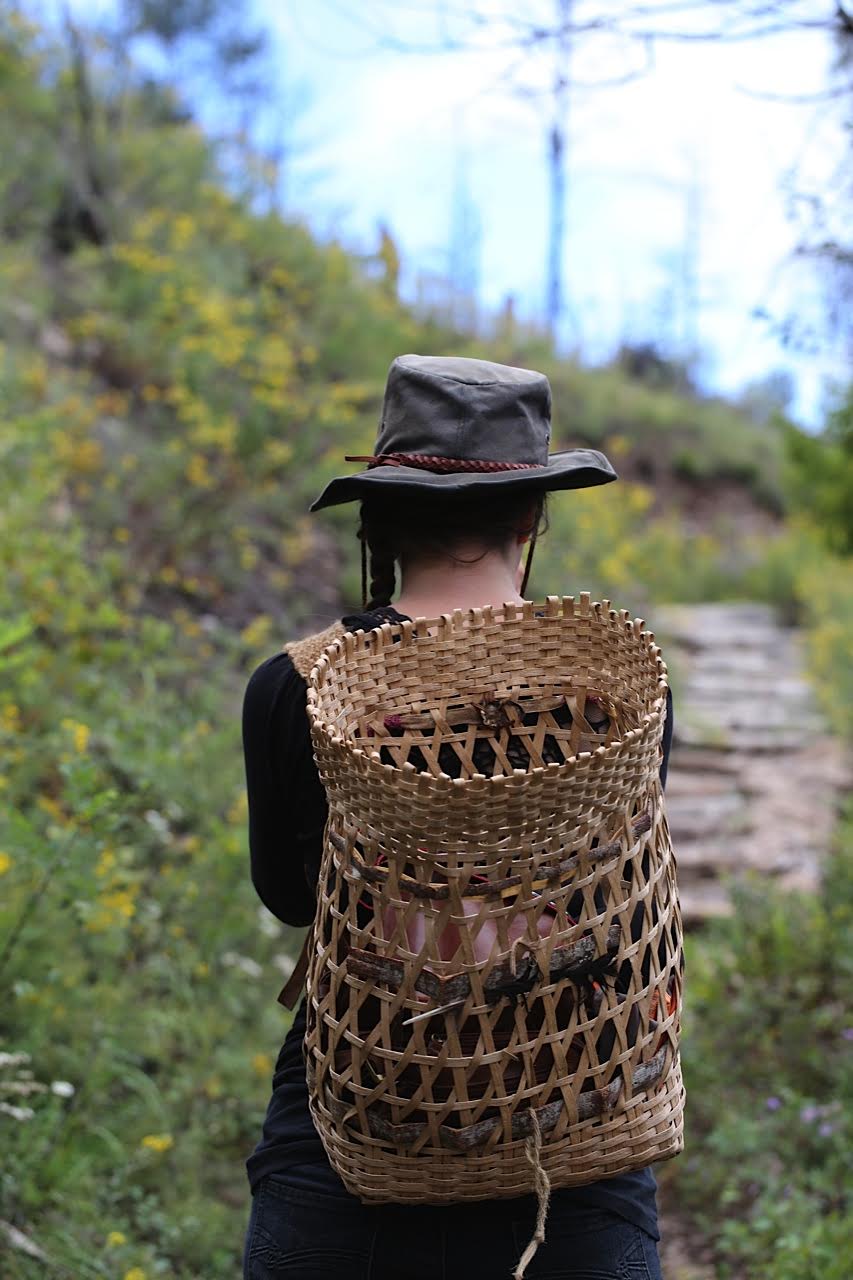
There is a thread that runs through the long tapestry of time. A line that connects us back to our grandmothers and great grandmothers and the lineage of womyn who came before. On a loom, each downward string is called a warp. Like time, these warp strings are the backbone that holds the weaving in place. But it is the generations of mothers and aunties, the horizontal weft woven in-between, that fill the loom with life. It is these weft strings, the threads of connection that travels across the space and time, that pulls everything together.
It is from this continuing weft of women that we each come into life.
Science has shown all the follicles (unripened eggs) a woman will ever produce are already present in her body when she is in the womb. The spark that is you was born long before you came into the world. And if you quiet your blood, you can feel a flame that reach back even further. Inside every one of us is a long and often unsung history of women. Fire makers and clay shapers, priestesses and caretakers, those who walked long miles and withstood many centuries of silence. Those who kept the old songs alive.
Connecting back into the power-held lineage of our female ancestors isn’t simply a flight of fancy or genealogical curiosity. To remember the women that came become you, and call upon that distinctly matrilineal magic, is an act of deep reclamation. By calling back we continue the weaving begun from the fingers of our female ancestors, that very first spindle-spun weft.
Long before the tides of Christianity swept across southeastern Europe, there was an ancient Matrilineal network of cultures called the “Old Europeans.” Matrifocal (woman-mother orientated) civilizations with sacred script and professional ceramicists. Cultures that planted seeds and built temples several stories high. Peoples that wove sophisticated lives and prayed to the Goddess(es). According to archeologist Marija Gimbutas, the threads of these largely egalitarian, peaceful and female-centric societies stretched across much of what we now call Europe.
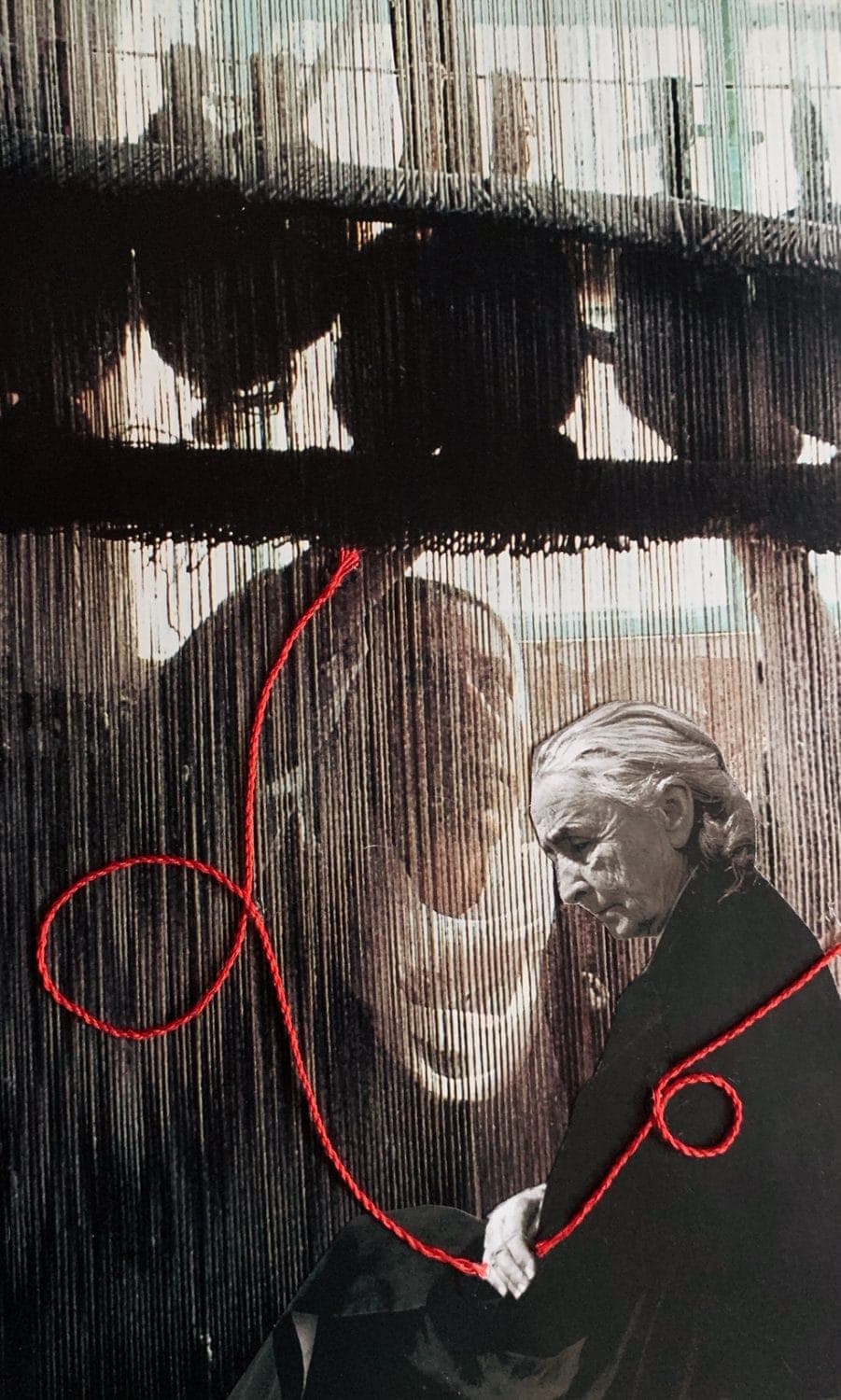
Archeologically speaking, the memories of these cultures are found in whispers. Empty temples and old village sites filled with ritual ceramics. The famous Venus figures and surviving burials. Each unearthed item, a thread that help us to understand what it would have been like to live in a culture in which women held the chalice of their own power.
In our own blood, however, the remembrances of this culture still rings like a temple bell. We can feel it when we pick berries with our fingers or when we are kept up late at night by the moon. We feel it when we dance, uninhibited and when we sing together. We feel it every time we plait back our hair and squat low to build a fire on the ground. We feel it in the fierceness that surges up through us and the bone-deep anger as well. We feel it when we look in the mirror and see a new wrinkle a gray hair, and we think “Good.” When we welcome growing older because we know a Crone is a woman who has come into her power.

Though it has been a long time since matrilineal cultures flourished in our world, everything moves in a circle, like the round of a harvesting song or the curve of a well-coiled vase. A world in which we value the power of blood that flows with the moon as much as blood that flows from a wound has already seen its wane and its new moon. Now, we are in the time of the waxing.
It has been many generations since every woman was recognized as the vessel of power that she is, but even now our women ancestors remain close, whispering to us of the waxing to come. Matrilineal magic is a deep and ancient kind of craft. One that will never be forgotten as long as we continue to seek and honor the threads that connect us back.
<< When the Grandmothers came to Visit >>
The grandmothers never disappeared. They are with us, still. They are helping us to weave the new weft.
Several years ago I set out to make an ancestor altar in my room. A space in which I could honor those that came before me and give thanks for my life. Earlier that day I had spent a totally unexpected sum of money. I was in the midst of a challenging health issue that was asking me to face some pretty overwhelming feelings of isolation and scarcity. On this evening, I tried my best to simply set my worries aside and breathe. I began by reaching up into a worn wooden box for one of my grandmother’s old handkerchiefs, a delicate and lacy swatch of thin cotton. I was shocked when my hand settled upon a softly folded piece of paper. Nestled in the box was an envelope with my name on it, and inside that envelope was a stack of bills– almost the exact amount of money I had spent that day. It was such a moment of unseen assurance; I sank to my knees for a few long minutes to weep.
Many months ago I had kept a small stash of cash in this envelope. But I had since spent every penny, I even had a memory of throwing the empty envelope away. But here it was, full again. In a place before words I instinctively felt my grandmother was there. She was there, cradling me, supporting me, assuring me that I have never, not once, been alone. As I folded onto the floor, time creased as well and I realized that my grandmother has always been here. And the grandmothers before her. And those before her as well. I could feel them, surrounding me in a circle, blessing and cherishing, holding me like the women of old used to do around their wells.
Our female ancestors and the cultures of magic they created has never left.
The grandmothers are here in the shape of my eyes, my long flat feet, the yearning drum I feel in my heart when I hear throat singing, or the way I might pause to touch the first opening cherry blossom. They are here – in childbirth and summer fields, in breasts full of milk, a faded envelope of bills, and flower bulbs.
Matrilineal magic never died.
<< Weft Vessel >>
Every once in a while we meet a woman familiar in our life who reminds us of our own strong heritage and the profound magic that can be sparked between two sisters who are seeking their own Weft. A few years ago I met Sylvia Linsteadt and such a flame leapt into life. Ever since the beginning we knew there was important work to be done together. Medicine to be realized, experienced and offered together. A thread we were meant to weave.
Now, after a year in creation. We are delighted to offering such a sister-woven creation to the world…
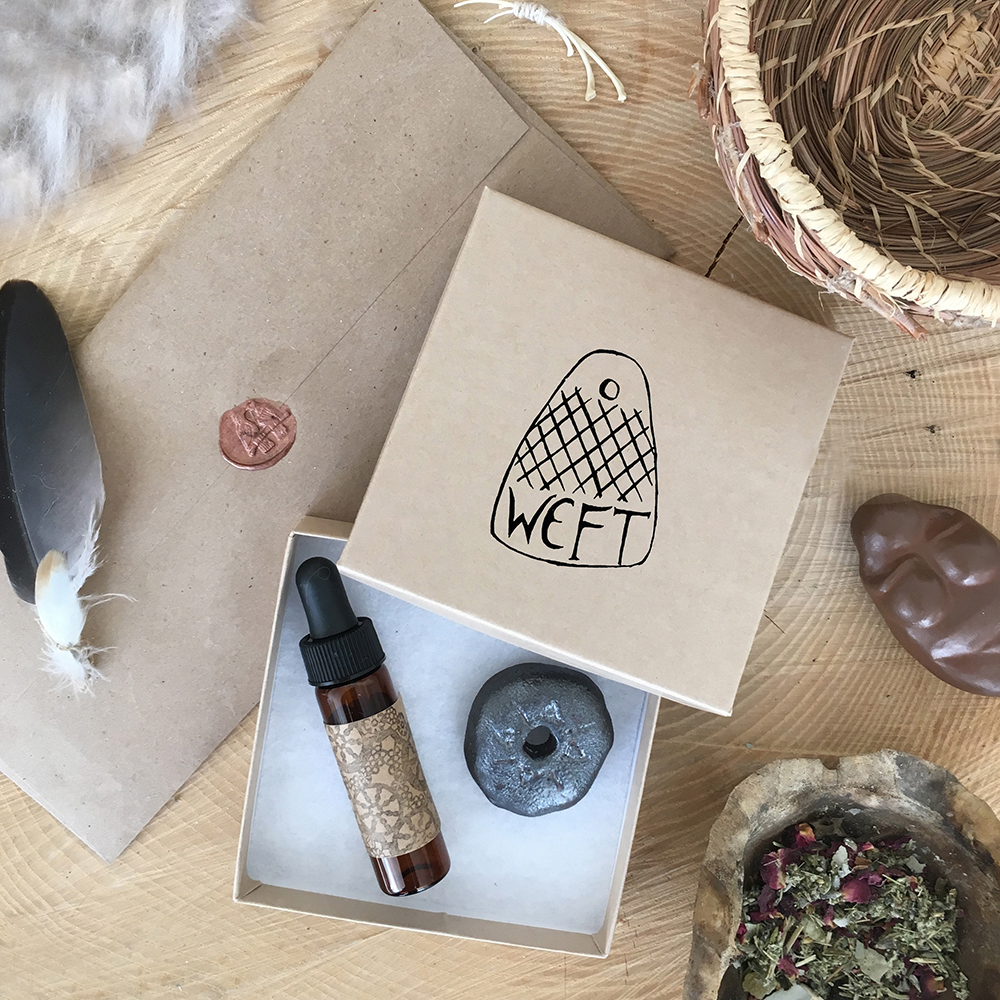
WEFT is a journey through plant, stone and word back into the long threads of your matrilineal line. Across ancient Europe there were ceremonial spaces created just to initiate women into the mysteries of life and regeneration, places that held the rituals of remembering and the sacred pottery of women who knew how to heal with their hands. With Weft, we offer both a thread and a vessel. A spindle-spun way to connect back into the powerful lineage of the women from which you came, and a richly embroidered place in which we can remember how to initiate ourselves.
Like a coil pot, WEFT was woven throughout many cycles with a single thread. It began in the spring softened hills of Appalachia where Asia Suler, of One Willow Apothecaries, created an elixir from the shades of ancient medicine there. Crafted from violets, wild iris, aquamarine and feldspar– the elixir was brewed from a spark of insight and a feeling of the women ancestors rising to be heard.
Once created, Asia sent the bottle of Sylvia Linsteadt of Wild Talewort. There, over many moons, Sylvia created the story portal that makes up the landscape of Weft. Ignited from her own experiences with the elixir, and from the kind of synchronistic magic that springs up every time two hedgewitches call back to the ancestors, the story unspooled itself over the course of nine months, a full gestation in which archaeological research, a ceramics class and a table loom all played unexpected parts.
Now, a year after the first spark caught, the first Crone song was sung—we offer this WEFT vessel to the world.

Comprised of….
The Grandmother’s Elixir: Crafted from the spring-softened medicines of Western Appalachia, Grandmothers is an elixir to invoke the initiatory magic of the womyn ancestors and our collective matrilineal line. Once upon a time we were all born from women who understood the mysteries of herbs and roots and death and beginnings. This elixir is a gateway to help remember our place in this continuum of hedgewitches and healers.
Hand gathered from the early April coves of these grandmother mountains— some of the oldest on earth— this medicine contains the seeds of findings ones destiny as a power-filled woman and recognizing one’s place as a vessel of wisdom in the lineage of all things to come. Created from slow simmered violet syrup, wild iris essence and an elixir of aquamarine + feldspar stones, this alchemical medicine is an invitation to open ones womb-deep intuition like the first folds of spring. An elixir of becoming, remembering and embracing your destiny— this purple hued medicine helps you to realize that the wisdom of the ancients still lives in your blood. You must only quiet yourself to find the inner song.
Weft: A Story – The tale of a girl, a drought, an underworld, and the most ancient roots of the Baba Yaga, set in partly historic, partly imagined Neolithic Transylvania around 6500 B.C.E. At this time, settled agriculture brought by small bands of Mediterranean travelers (and their grains, goats and sheep) was taking root across southeastern Europe, woven relatively peacefully into the framework of indigenous Mesolithic hunting and gathering tribes. Out of this union, a matrilineal network of cultures called “Old European” flourished across southeastern Europe, leaving behind temples and villages full of an astonishingly beautiful array of ceramic work that was largely ritual in function. These ancient village sites full of offering jugs and sacred ovens, at the edges of mountains and woods, feel like indigenous ground in me. On a pathway of my own ancestral blood through Austria, through Hungary, through Poland, through Russia, I can follow a part of myself back to a source, a place of balance, a set of ancient lifeways to look to for wisdom, for strength, for wholeness.
This story is a celebration of the deep beauty and power of ancient women’s work: weaving, spinning, pottery, child-bearing, plant-tending, medicine gathering. It is a hymn to the dying we undertake every moon in the underworlds of our own bodies, even if we no longer bleed, and the process of being reborn. Imagine that it is an ancient clay vessel, dug up in a dozen shards from the earth. These are the warp, the structure, of the telling. It is you, the reader, who must weave the weft of their meaning over-under, over-under, using the shuttle of your own soul to make out of it your version of wholeness: the offering jug left out at the edge of the known field, full of milk.
Ancient Vessel Meditation: An audio journey to guide you deeper into receiving the medicine of this matrilineal weaving.
Weft Voices: An audio soundtrack of the songs and sounds that guided our creation of this vessel, from Hildegard von Bingen to the folk songs of mountainous Bulgaria.
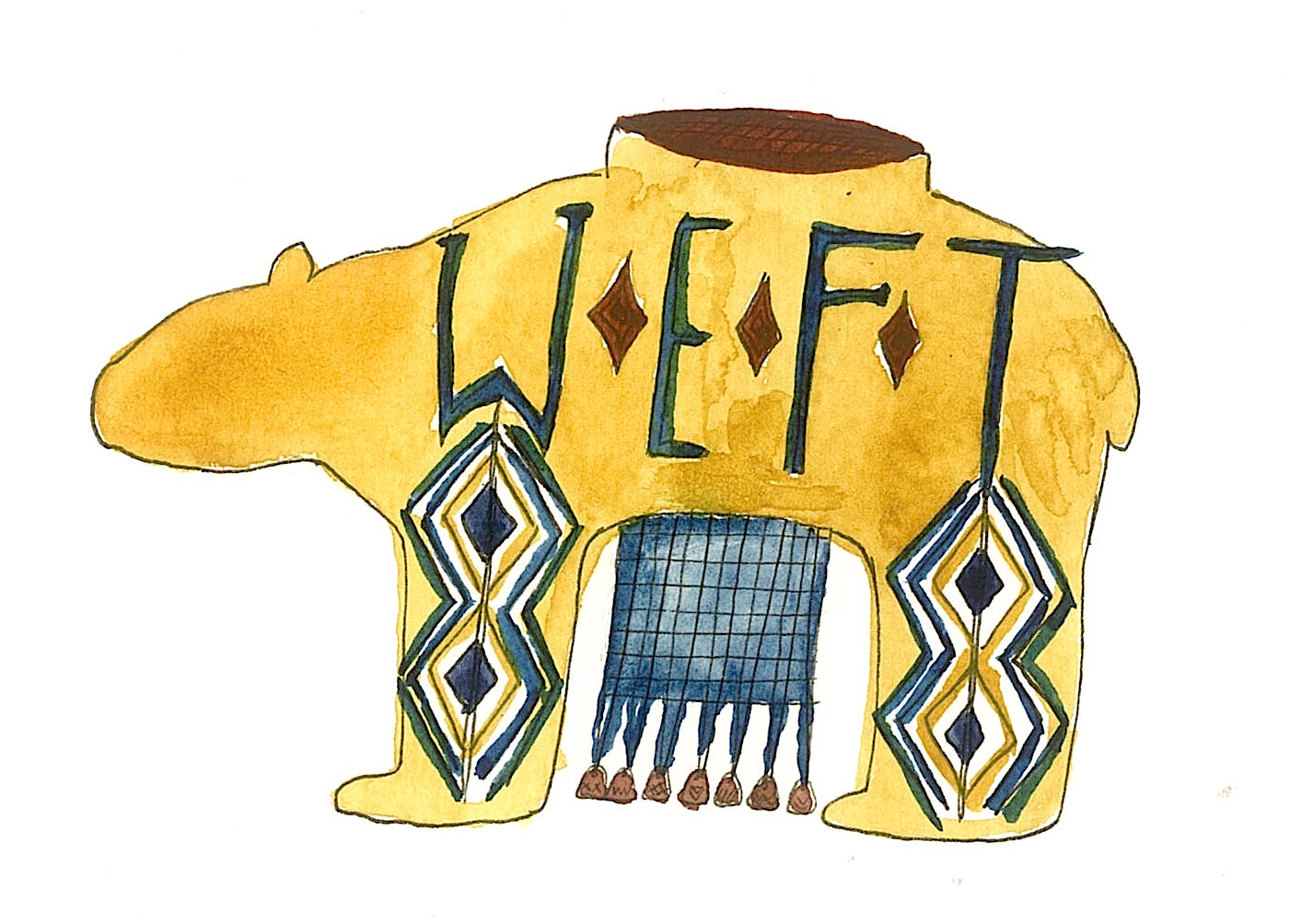


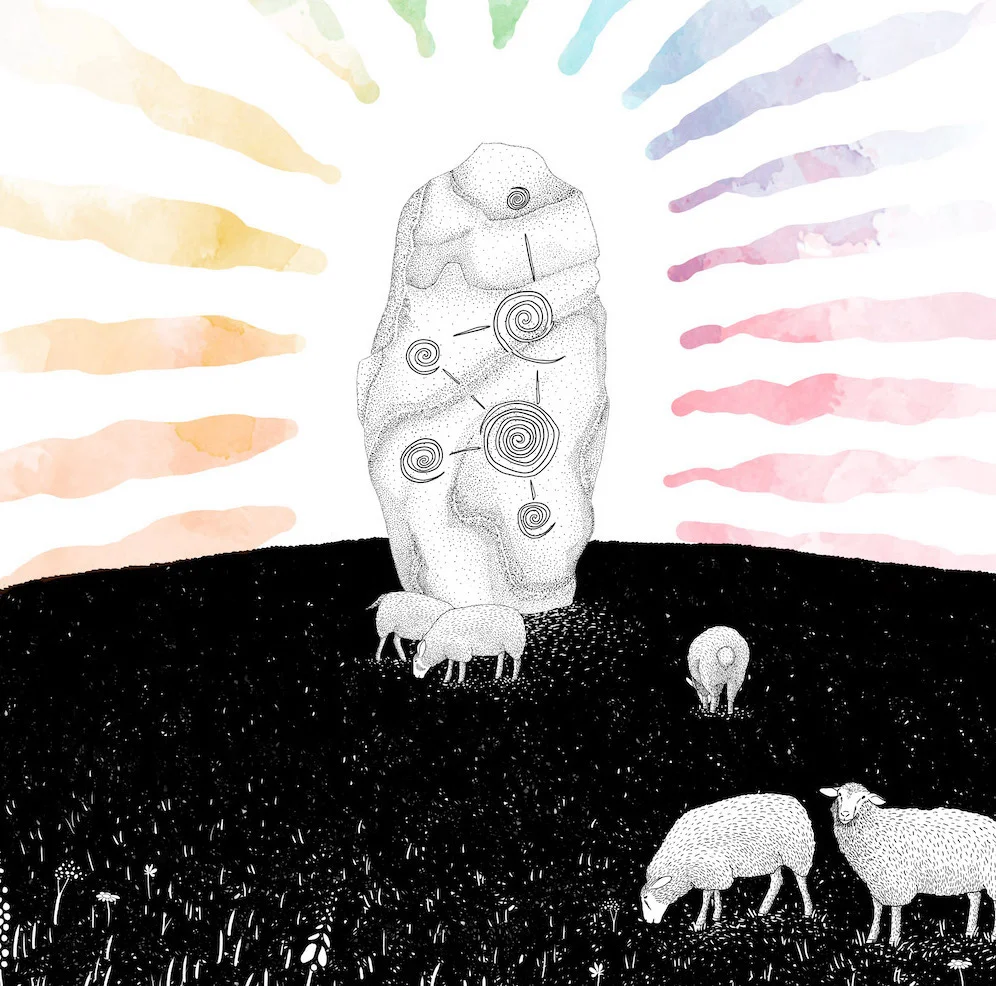
I love these ideas; but scholarship has not been kind to Gimbutas’ theories about a matrilineal old Europe.
Hi Sandra, I am sadly aware of this. Sylvia Linsteadt wrote a piercing reflection on this controversy on her blog. I highly recommend the read!
http://theindigovat.blogspot.com/2016/04/the-warp-and-weft-of-old-europe.html
“Soon after discovering Gimbutas’ work when I was 20, I also discovered the intense controversy around it. I will admit that for a while, that controversy kept me away. Attacks on her work were loud and strong, consisting of assertions that she had made everything up, that she had absolutely no grounds for much of what she was claiming about the symbolism she read into on pots, figurines, vases, that it was a load of feminist hogwash, etc., truly startled me.I’ve since discovered that the vast majority of criticism for Gimbutas’ work in fact amounts to little more than slander. Frighteningly effective slander absolutely inextricable from a subconscious and fearful sort of misogyny. I’m not trying to say here that her work contains no flaws–whose work, especially in the field of archaeology, is perfect? That’s a complete unreasonable concept. But the intensity with which Gimbutas was debunked speaks to something beyond reason and fact…
What really riled people up about Gimbutas (men and women both) was that her approach to the material of a matrilineal Old Europe and its religious system was interdisciplinary, and that it had to do with a “goddess”-oriented religion. (Gimbutas herself found the term “Goddess” limiting, but used it for lack of a better word to describe an intensely potent feminine power inherent in the earth itself, both nurturing and terrifying and very much revered by Neolithic agricultural peoples, as well as indigenous cultures across the world and traditional peasant folk to this day.)”
Thank you so much, wonderful read! I’ve just finished reading “The Horse, the Wheel, and Language” and it was interesting to see there were many instances where the author cites Gimbutas work, only a couple where he gives specific critiques of areas that have contradicted her theories IE waves of invaders. But he clearly looks to her as an expert in the field. In another part of the book he describes without relationship to Gimbutas that there is evidence in Africa of matrilineal cultures giving way to patrilineal structure as they transition from foraging to pastoral agriculture. It makes perfect infuriating sense that patriarchal academia would ridicule and slander her.
Thank you again.
You are so welcome! And thank you for turning me on to “The Horse, the Wheel, and Language.” I think we are all in this collective process of re-membering, of putting the shards back together and noticing picking back up what we once threw away as rubbish. Wholeness is a process, but I’m grateful to be a part of a web of such strong women and re-weavers.
I have another recommendation, currently reading “The Hunter, The Stag, and the Mother of Animals” by Esther Jacobson-Tepfer(2015), about Stone Age carvings and stone structures in Siberia. The indigenous nomadic tribes there were thought to have a matriarchal culture based on a protective, generative female hearth deity and cosmic totemic “original mother”, which transitioned into a patriarchal sky god shamanic culture with “hero hunters”. It’s a beautiful book, and reminds me very much of what I’ve learned of the hearth fire goddesses of Europe. The ancestors want these stories to be remembered, for all the Mothers and Grandmothers.
Thanks Sandra! This is great.
I just wanted to say that in Australia (in my graduate studies at least), Gimbutas’ work is taught and while we also learn of the controversy surrounding her theories, they are seen to be not disproven and in fact to be most likely correct. Obviously one must make their own mind up about these things via much research themselves, however, the general consensus is that she makes a very very strong case for a completely different society of before.
Also, this piece is beautiful and powerful. Thank you x
Leanne this is so very heartening to hear. Much gratitude for sharing this piece, my heart feels a bit lighter!
I was genuinely startled to read this “These ancient village sites full of offering jugs and sacred ovens, at the edges of mountains and woods, feel like indigenous ground in me.” I dreamed of this place in December. I too have an Ancestral alter, and my female line close by. Three miles away is where my gt gt gt grandmother, her daughter, her daughter, and her daughter (my grandmother) were born. The milk for the milk kefir I make which has been so central to my health the last few months, comes from a jersey herd established in that same village for 80 years…Every time I drink it, I think of those grandmothers
Absolutely beautiful. The generations and milk of the milk.. Thank you so deeply for sharing.
You have a gift for storytelling and there is wisdom in your words. Thank you
Thank you for reading Abraxas <3
Wow!
Your writing is so gorgeous. I couldn’t take it all in. I want to come back as a hope offering to savor it more. Thankyou ❤
beautiful, just beautiful <3
<3 Thank you for reading Courtney